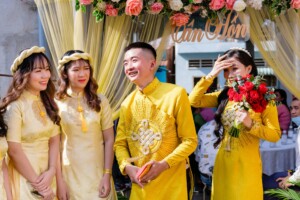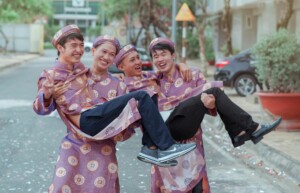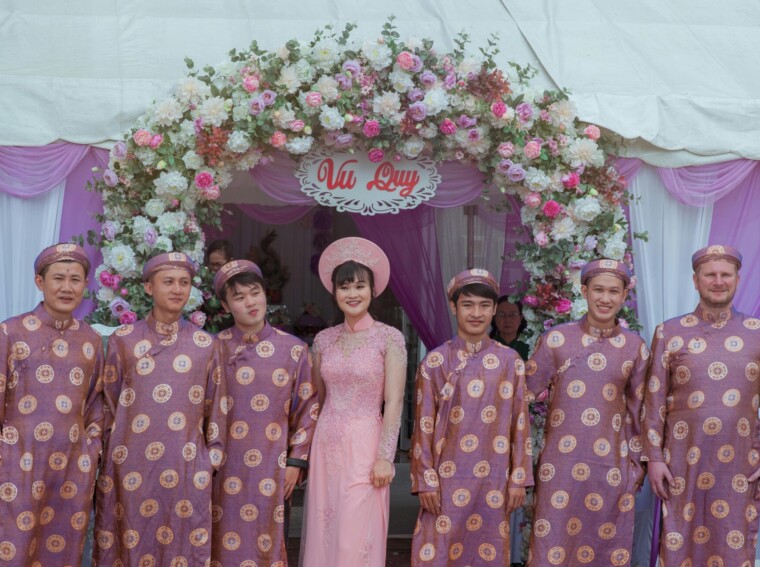Thieu Nien Ca Hanh
Thieu Nien Ca Hanh dates back centuries to ancient. It originated as a cultural practice to honor the transition of young individuals into adulthood, symbolizing their growth and maturity within the community.  Over time, this ceremony became deeply rooted in Vietnamese society, with families passing down the rituals and customs from generation to generation.
Over time, this ceremony became deeply rooted in Vietnamese society, with families passing down the rituals and customs from generation to generation.
Initially, Thieu Nien Ca Hanh was reserved for noble families and served as a way to instill values of respect, gratitude, and responsibility in young people. The ceremony was designed to mark a pivotal moment in a person’s life, acknowledging their journey from adolescence to adulthood. The timeless nature of this tradition reflects the rich cultural heritage of Vietnam and the importance placed on family and community bonds.
Throughout history, Thieu Nien Ca Hanh has evolved to incorporate new elements while preserving its core essence. Today, the ceremony continues to hold significant meaning for Vietnamese families, emphasizing the importance of honoring one’s roots and values. Despite modern influences, Thieu Nien Ca Hanh remains a cherished tradition that connects individuals to their past and strengthens the fabric of Vietnamese culture.
Significance of the Ceremony
 Thieu Nien Ca Hanh holds significant cultural importance within Vietnamese society, symbolizing the transition from childhood to adulthood.
Thieu Nien Ca Hanh holds significant cultural importance within Vietnamese society, symbolizing the transition from childhood to adulthood.
Family values are at the core of this ceremony, emphasizing respect for elders, gratitude for ancestors, and the acceptance of adult responsibilities.
The ceremony reinforces community bonds as friends and relatives come together to celebrate the growth and maturity of the young individuals participating in Thieu Nien Ca Hanh.
Through this ritual, participants not only honor their past and heritage, but also look towards the future with a sense of pride and cultural identity.
Customs and Traditions
Thieu Nien Ca Hanh is steeped in Customs and Traditions that have been passed down through generations in Vietnamese culture. Here are some key aspects that highlight the rich heritage behind this significant ceremony:
- Traditional Attire: Participants in Thieu Nien Ca Hanh don special outfits that symbolize purity and the transition to adulthood. Young girls often wear ao dai, a traditional Vietnamese dress, while boys don elegant suits or ao trang, a white robe representing innocence.
- Ritual Offerings: An integral part of the ceremony involves making offerings to ancestors and deities as a sign of respect and gratitude. These offerings typically include fruits, flowers, and incense, symbolizing prosperity, beauty, and spiritual connection.

- Ceremonial Practices: During Thieu Nien Ca Hanh, various symbolic rituals are performed to mark the journey from childhood to adulthood. These rituals may include dance performances, singing traditional songs, and engaging in communal activities that signify unity and growth.
- Family Involvement: Families play a central role in the preparation and execution of the ceremony, emphasizing the importance of kinship and solidarity. Parents and elders guide the young participants, imparting wisdom and values that reflect the essence of Vietnamese culture.
- Celebratory Feast: To culminate the event on a joyous note, a celebratory feast is held where friends and family come together to share a meal and extend well wishes to the participants. This communal gathering fosters a sense of unity and belonging within the community.
Thieu Nien Ca Hanh stands as a profound cultural tradition that unites generations, instills values of respect and family ties, and marks a pivotal moment in the journey to adulthood. This ceremonial rite not only preserves Vietnamese heritage but also nurtures communal harmony and inter-generational relationships. By honoring diversity and fostering unity, Thieu Nien Ca Hanh encapsulates the essence of Vietnamese traditions, serving as a beacon of cultural richness and understanding within the community. Embracing this coming-of-age ceremony is a testament to the enduring legacy of Vietnamese culture and the significance of passing down timeless values to future generations.

